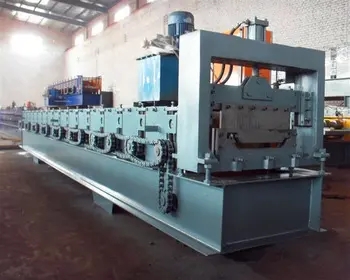
Steel Coil Cut to Length Line An Overview
The steel industry plays a pivotal role in modern infrastructure and manufacturing, with various processes designed to meet the diverse needs of end-users. Among these processes, the steel coil cut to length line stands out as a critical operation that transforms coils of steel into sheets of specific lengths and widths. This article explores the significance, process, and technological advancements associated with the steel coil cut to length line.
Importance of Steel Coil Cut to Length Line
Steel coils are typically produced during the hot-rolling process, where molten steel is rolled into thin sheets and then coiled for ease of storage and transportation. However, many applications require these coils to be cut into more manageable lengths. The cut to length process is essential for industries such as automotive, construction, and appliances, where precise dimensions and material properties are crucial.
A cut to length line can enhance productivity by allowing manufacturers to create tailored steel sheets that fit specific project requirements. This customization minimizes waste and improves efficiency, making it an attractive option for businesses aiming to optimize their operations. Moreover, it ensures that the end products adhere to quality standards, as the cut sheets can be subjected to further processing, such as stamping and welding.
The Cut to Length Process
The steel coil cut to length line consists of several stages, each designed to ensure precision and quality. The process typically begins with the unwinding of the steel coil. This is achieved using an uncoiler, which carefully releases the coil without introducing any deformation or damage.
Next, the steel sheet is leveled to eliminate any internal stresses that may have developed during the coiling process. A leveler consists of a series of rollers that work together to achieve a flat, uniform sheet. This is a critical step, as any imperfections in the flatness can affect downstream processing and the quality of the final product.

After leveling, the steel sheet is passed through a cutting section. This section usually employs rotary shears or guillotine-style cutters that can accurately cut the sheet to the desired length. The precision of the cutting mechanism is vital, as it directly influences the quality of the products and the efficiency of processing. The cut sheets are then stacked neatly to facilitate easy handling.
Technological Advancements
Recent advancements in technology have significantly improved the capabilities of steel coil cut to length lines. Automation plays a crucial role in enhancing efficiency and reducing labor costs. Modern cut to length lines are often equipped with advanced sensors and control systems that enable real-time monitoring of the entire process. This technology ensures that any deviations from targets can be quickly rectified, minimizing waste and maximizing productivity.
Furthermore, software solutions have emerged that integrate with cut to length lines to optimize the cutting schedule based on customer demands. These systems analyze real-time data to adjust processing speeds and cutting lengths dynamically, making the operation more responsive to market needs.
In addition, the use of high-quality materials and precision engineering in the construction of cut to length lines has improved durability and performance. These advancements have reduced maintenance costs and increased the overall sustainability of the operations.
Conclusion
The steel coil cut to length line is an essential component of the steel processing industry, enabling manufacturers to convert coils into sheets that meet specific customer requirements while minimizing waste. With technological advancements driving efficiency and precision, these lines are better equipped to meet the demands of an ever-evolving market. As industries continue to prioritize sustainability and cost-effectiveness, cut to length lines will remain critical in ensuring the steel industry can adapt and thrive. In a world where custom solutions are increasingly in demand, the significance of the steel coil cut to length line is only set to grow further, cementing its place as a cornerstone of modern manufacturing.